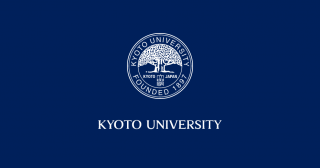Kyoto University, Okayama University, and National Research Institute of Fisheries Science of Japan, together with four Chilean research institutions — the University of La Frontera, the University of Antofagasta, the University of Los Lagos, and the Fisheries Development Institute — recently launched a collaborative research project aimed at understanding the formation mechanism of harmful algae blooms (HABs) and developing a system for future forecasting and warning. On 13 June, Kyoto University hosted a kick-off symposium primarily for Japan-based members of this international undertaking at its Tokyo office.
HABs' environmental and economic impacts remain an issue of concern in Chile, where, as is the case with many other coastal counties, the fishery and fish farming industries suffer frequent damage from algal blooms. In the present project — officially known as “Development of harmful algal bloom monitoring methods and forecast system for sustainable aquaculture and coastal fisheries in Chile” — academic, industrial, and governmental partners will work together on developing an HAB monitoring and detection system, in an effort to reduce algal damage and help stabilize the livelihood of those engaged in susceptible industries.
The project will run for five years starting in April 2018, with support from the Japan International Cooperation Agency (JICA) and the Japan Science and Technology Agency (JST) provided under the "Science and Technology Research Partnership for Sustainable Development (SATREPS)" program. SATREPS offers extensive assistance for collaborative projects between Japanese research institutes and those in developing countries on issues requiring international cooperation, such as environmental degradation and natural disasters. The goal is to help achieve outcomes of practical benefit to both local and global societies.
The 13 June symposium was planned by Graduate School of Medicine Associate Professor Fumito Maruyama — who leads the Japanese side of the project — and members of Kyoto University Research Administration Office (KURA). It was attended by His Excellency Mr Gustavo Ayares, Chilean ambassador to Japan, and other distinguished guests, as well as researchers and other professionals involved in the project. Some of the overseas-based partners also took part via video letters.
In the opening session, Professor Yukari Mitsuhashi, vice-director of the International Strategy Office, made a speech on behalf of Kyoto University, reflecting on the University’s strong commitment to achieve the Sustainable Development Goals in collaboration with international partners, under programs such as SATREPS. She also touched upon the long and friendly relationship between the two countries, citing Japan's historical contributions to the Chilean salmon farming industry, and expressed hope that the HAB project will lead to stronger bilateral ties as well as to global food sustainability.
Three guest speakers — HE Mr Ayares; Dr Tsukasa Nagamine, JST Research Supervisor; and Mr Shigeru Maeda, JICA Senior Vice President — then offered words of congratulations on the project's launch and their best wishes for its success. Following an introduction by Professor Maruyama, who provided an overview of the undertaking, project members from both countries took turns to present their visions, ideas, and experiences related to the collaboration.
In the closing session, Professor Maruyama expressed satisfaction with the fact that the symposium had brought together the project's chief stakeholders from academia, industry, and government for face-to-face conversations, and pledged that he and his team would do their best to ensure smooth operation of the undertaking.
The event concluded on a high note following an informal discussion session, where participants actively exchanged ideas with each other.
Another kick-off symposium, this one organized by the Chilean partners, is scheduled to take place September 2018 in the city of Santiago.

Associate Professor Maruyama speaking

Associate Professor Maruyama and Ambassador Ayares

Packed symposium venue

A sake-barrel opening ceremony to celebrate the project's launch

Participants exchanging ideas with each other

Symposium participants





